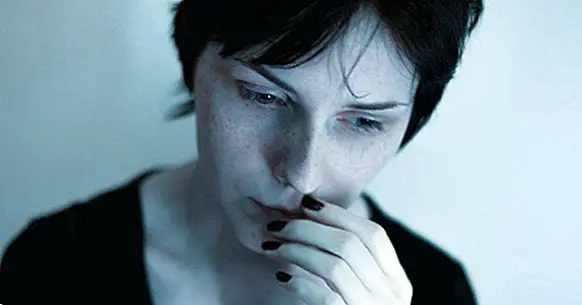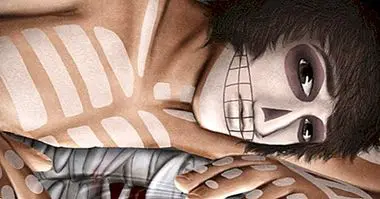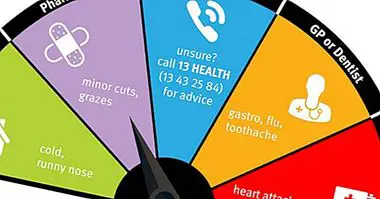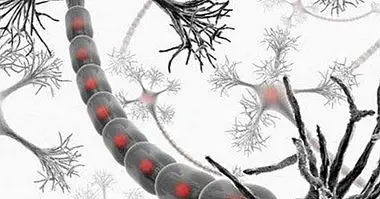Alogia: when language and thought stop flowing
Thinking and constructing a more or less elaborate discourse may seem simple, since it is something that is done continuously. However, it is a complex and laborious process that involves a lot of mental subprocesses and intermediate steps.
A large majority of the population manages to carry out such processes successfully and structure a coherent and cohesive internal discourse which is capable of expressing and transmitting to others through a rich and elaborate language.
However, there is a large number of people who are unable to establish a logical and understandable discourse. This happens in cases where it enters the scene a psychological phenomenon known as alogia . Why does this happen?
- Maybe you're interested: "Anhedonia: the inability to feel pleasure"
What is the alogia?
The alogia is an alteration of the form and content of thought and language in the form of impoverishment, observable impoverishment in oral discourse.
While it is observed in the language, At the level of thought the main alteration of the people with alogia . This is revealed as illogical and uncoordinated, slowed down and with severe difficulties for abstraction. It is difficult to develop and manage different ideas, taking longer to respond to external stimulation.
Despite the large number of aspects it incorporates, the alogia it is not considered a disorder per se but a symptom of another pathology or alteration , as happens for example with apathy.
Associated symptoms
The most visible symptoms are the presence of a decreased fluency of thought , an uninformative speech content and a reduction in the level of spontaneity.
The person with alogia presents a fluent speech , expressing through brief communications and even based on monosyllables. The speech stops being spontaneous and the own attempts of communication with the means are reduced, being more reactive. When it occurs, communication tends to be very concrete, repetitive and with little content and information reflected in it. It is also common to see blockages and interruptions in both speech and thought, losing their direction. For this reason derails often occur, losses of the association between the different components of the speech.
Another important aspect is the difficulty to capture metaphors and symbolic language , with which the person tends to understand and use only the literal meaning of the terms.
For everything that implies, the alogia supposes a high level of alteration in the life of the sufferer . Social interaction is greatly hindered, resulting in severe difficulties in family and social life. Also in the workplace a great effect occurs, as well as in the other vital areas of the individual.
Causes of the alogia
Alogia is a symptom linked to logic, the ability to link thought, inhibit it and manage it consciously. The causes of this alteration are linked to a dysfunction in the synthesis of dopamine in specific areas of the brain, specifically the mesocortical pathway. The regions that are part of this route do not receive enough of this substance, which causes both the alogia and other negative symptoms.
Apart from it It can also occur due to the presence of lesions in said pathway , in the connection of the frontal lobe with the basal ganglia or by different types of damage in the temporal lobe, specifically in the Wernicke area and in other areas linked to language.
Disorders in which it appears
The alogia or poverty of thought is especially visible in schizophrenia , presenting as a negative symptom. In fact, it is one of the main negative symptoms of this disorder. This implies that it supposes a severe reduction of the basic capacities of the subject.
In addition to schizophrenia, alogia can appear in other types of disorders. For example, It is common to occur in people with dementia . It is also not strange that it appears in other types of pathologies, especially when they have psychotic characteristics.
Finally, similar manifestations to the alogia have been described sometimes as an adverse reaction to some medications or substances that reduce the level of dopamine in the brain. A classic example is the classic antipsychotics, which act by reducing the level of dopamine in a non-selective way. While this is useful in certain nerve pathways to reduce positive symptoms in others can hinder and aggravate, and even generate, negative symptoms such as alogia.
- Maybe you are interested: "The 6 types of schizophrenia and associated characteristics"
Treatment
The treatment of this type of symptoms can be complex to achieve, but in spite of this, more and more progress is being made in this regard. As in many other cases, the way to treat a symptom such as alogia will depend to a large extent on its etiology (causes) .
Considering that it is especially linked to schizophrenia, Atypical antipsychotics are usually used pharmacologically , which generate an increase in dopamine at mesocortical level by acting as serotonin antagonists in different brain nuclei (which in turn inhibits the synthesis of dopamine, so it would inhibit an inhibitor).
The use of amphetamine derivatives It also seems to generate positive results when the aspect to be treated is only the presence of alogia, although more research is required in this regard. This consideration should not be taken into account in the case of schizophrenia, since the increase in activation could generate psychotic outbreaks and positive symptoms.
On a psychological level the use of different types of therapies is recommended according to the origin of these symptoms . Regardless of the specific programs that are used, in general psychosocial rehabilitation and psychoeducation are useful both for the individual and for the environment to have tools and guidelines for action. Training in social skills and problem solving can also be helpful.
- Related article: "Psychotropic drugs: drugs that act on the brain"
Bibliographic references:
- American Psychiatric Association (2002). DSM-IV-TR. Diagnostic and Statistical Manual of Mental Disorders. Spanish edition. Barcelona: Masson. (Original in English of 2000).
- Desai, N., Gangadhar, B.N., Pradhan, N. & Channabasavanna, S.M. (1984). Treatment of negative schizophrenia with d-amphetamine. The American Journal of Psychiatry, 141, 723-724.
- Santos, J.L. (2012). Psychopathology. CEDE Preparation Manual PIR, 01. CEDE. Madrid.



















